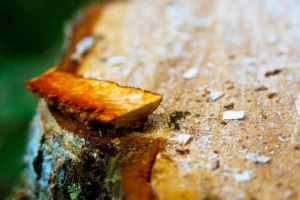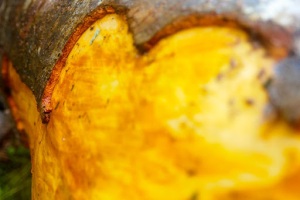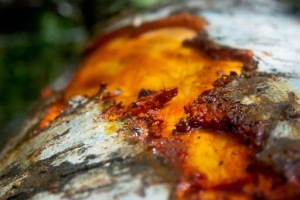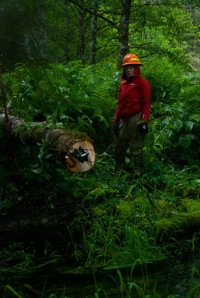
This week I spent some more time in the field, this time helping watching some folks put trees, a.k.a. large woody debris, into a stream. This makes for good habitat for baby salmon. Although it involved a lot of tromping around in the rain and a lot of no-see-ums who wanted to chew on me, it was fun because I had the right gear to be waterproof and I got to see what is involved in the restoration process.
All the trees added to the stream were red alders, a quick growing tree that takes advantage of disturbed ground in places where there were logging roads, or river bottoms that large logs were dragged through.
Red alders are tall and have white bark, and if I went by the minimal tree knowledge I had coming into this job with the Forest Service (where I have learned much about salmon, and a little about trees) I would have tried to tell you that they were birch trees.
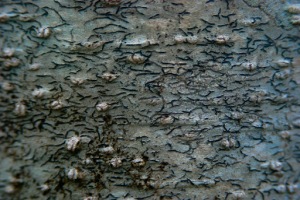
However, once they cut a few red alders down and dragged them around, scraping off the bark, it became obvious that the inner layer of the bark is the color of a nosebleed, hence the “red” of red alder. And I don’t think you see that in a birch…

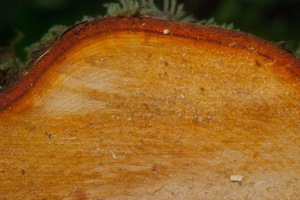
I thought it was pretty, so I took a bunch of pictures of it. In fact, I was photographing some scraped bark when they started calling my name, and suggested I leave when everyone else was walking off, so as not to leave me alone in bear country.
For the record, there was a bear spotted, but it ran off the trail before anyone but one guy saw it. I saw the tracks, but they weren’t super big.
